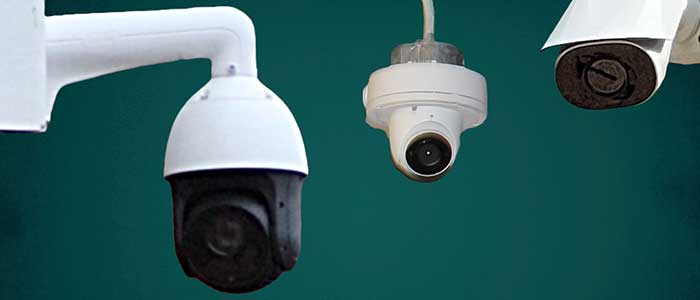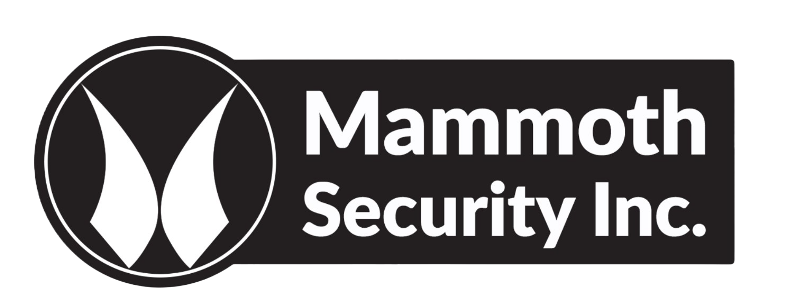Video MGMT System
 Access Control
Access Control
Voice & Data Wiring
 Burglar Alarm
Burglar Alarm
 Fire Alarm
Fire Alarm
Video MGMT System
Voice & Data Wiring
THOUGHT CENTER > Blog > Security Cameras
August 28, 2023
Too busy to read? Here’s a short summary:
This guide provides a detailed look into how to install security cameras, with particular emphasis on different types of cameras and the unique considerations for indoor and outdoor installations. We also discuss why professional installations are necessary for commercial-grade security and review their benefits.
Before we dive in, here's the general step-by-step process for installing security cameras:


Now, let's dive into factors to consider before installing cameras indoors or outdoors.
Indoor camera installations typically require smaller cameras, less weatherproofing, and are often less conspicuous than outdoor installations.
Indoor cameras may be installed on walls or ceilings, but be sure to install them high enough to avoid tampering.
Outdoor camera installations demand weatherproof cameras. Outdoor cameras are best placed high up to monitor areas like entrances, parking lots, playgrounds, and walkways.
Be sure to pay attention to the direction of sunlight to avoid glare in your surveillance footage.

Turret cameras are suitable for both indoor and outdoor use. Their unique ball-and-socket design also allows for a wide range of angle adjustments even after installation.
Dome cameras are versatile and discreet, perfect for indoor use. They’re typically ceiling-mounted, and their dome cover provides additional protection.
Dome cameras are discouraged for outdoor use because they’re prone to a host of complications from the weather that make them unreliable and expensive to maintain.
Bullet cameras are ideal for long, straight-view applications. They come in both indoor models and weatherproof outdoor models.
For the best coverage, they should usually be installed high and pointing down.
PTZ cameras offer pan, tilt, and zoom functionalities, making them ideal for tracking moving objects in large areas. They’re best used as support cameras to zoom in on and follow objects spotted by AI-supported overview cameras for special attention.
License plate recognition cameras should be installed at a height that aligns with vehicle license plates at the car entrance and exit points. LPRs require good lighting for maximum functionality.
Fisheye Cameras provide a wide-angle view, making them perfect for comprehensive indoor coverage. They’re often placed centrally in rooms for 360-degree coverage.
While DIY security camera installation is an option for homes and very small businesses, professional installation is preferred by businesses and institutions for its numerous benefits.
Professionals can furnish commercial-grade security cameras with enhanced durability, higher-quality imaging, and advanced features that DIY cameras can’t approach.
Commercial-grade cameras installed by professional dealers/installers are designed for continuous usage and longevity, making them perfect for business, institutional, and public security.
Professionals have the experience and know-how to identify the best locations for camera placement. They use their expertise to ensure that the systems they install provide maximum coverage with maximum effectiveness.
From correct wiring to the configuration of the camera system, professionals can ensure that your cameras function optimally.
Installing security cameras can be a complex task. Letting professionals handle it saves you time and effort.

Thanks for reading this blog post. Now you know a lot more about the factors that go into proper security camera installation. At Mammoth Security, we have the experience and know-how to expertly help you meet your security needs—from video surveillance and access control to alarms and structured cabling.
To learn more about the best camera placement and installation practices for your unique site, fill out the form below. We’ll arrange for a friendly expert from our team to conduct a free site survey and security consultation.
NOT COMPLETELY SURE?
860-748-4292A commercial-grade security camera is a high-quality, durable camera built to deliver excellent performance and withstand demanding conditions. They often include advanced features, such as high-resolution imaging, night vision, weather resistance, and AI-supported analytics.
The most common types of commercial-grade security cameras are dome cameras, turret cameras, bullet cameras, PTZ cameras, license plate recognition cameras, and fisheye cameras. Each has unique functionalities and is suitable for different applications.
While it's possible to do it yourself, professional installation is standard for commercial properties. Commercial-grade cameras require specialized knowledge for correct placement, wiring, and set up to ensure optimal functioning.
The time required to install commercial-grade security cameras varies depending on the size of the property and the number of cameras to be installed. Typically, a professional installation may take anywhere from a few hours to a few days.
Strategic camera placement is crucial for achieving a maximum return on your investment. Common locations for camera installation include entrances and exits, parking areas, hallways, cash registers, and any other vulnerable or high-traffic areas.
Key features you should consider include high-resolution video, night vision, motion detection, remote access, weather resistance for outdoor cameras, and compatibility with your existing systems.
Yes, most commercial-grade security cameras designed for outdoor use are built to withstand various weather conditions. Look for IP (Ingress Protection) rating to ensure that your outdoor camera is appropriately weather resistant.
Most modern commercial-grade cameras can be accessed remotely through dedicated apps or software. This allows you to monitor your property in real-time, no matter where you are.
While there are wireless options, most commercial-grade cameras are hardwired for improved reliability. Hardwired camera systems are also less vulnerable to interference than wireless cameras.